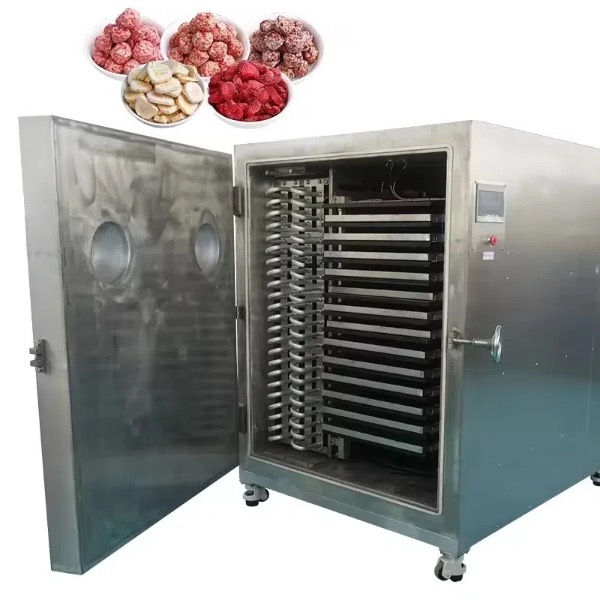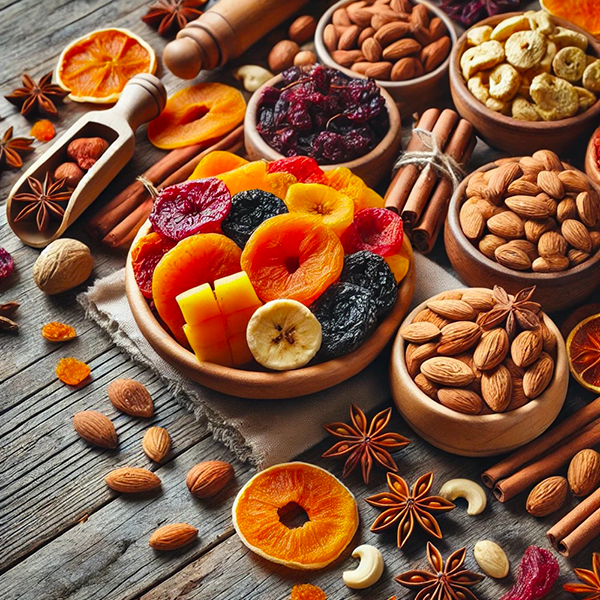
Content Menu
● Introduction to Room Type Drying Machines
>> Key Components of Room Type Drying Machines
● Best Practices for Using Room Type Drying Machines
>> Energy Efficiency
>> Customization and Versatility
>> Maintenance and Regular Checks
● Application in Food Drying
● Advanced Features and Technologies
● Environmental Impact
>> Cost-Effectiveness
● Conclusion
● FAQs
>> 1. What are the key components of room type drying machines?
>> 2. How do room type drying machines contribute to energy efficiency?
>> 3. What types of food can be dried using room type drying machines?
>> 4. What maintenance practices are recommended for room type drying machines?
>> 5. Can room type drying machines be customized for specific industry needs?
● Citations:
Room type drying machines are versatile and efficient solutions for drying a wide range of materials, including food products, industrial components, and textiles. These machines are designed to provide consistent drying results while minimizing energy consumption and operational costs. In this article, we will explore the best practices for using room type drying machines, focusing on their application in food drying, maintenance, and customization options.

Introduction to Room Type Drying Machines
Room type drying machines are ideal for large-scale drying operations due to their ability to handle significant volumes of material. They are particularly useful in the food industry for drying fruits, vegetables, meats, seafood, herbs, and spices. These machines ensure that the drying process is controlled and consistent, preserving the quality and nutritional value of the food products.
Key Components of Room Type Drying Machines
1. Insulated Drying Chamber: This component helps maintain a consistent temperature and humidity level inside the machine, ensuring efficient drying and minimizing energy loss.
2. Heating System: The heating system is crucial for providing the necessary warmth to remove moisture from the food products. It can be customized based on the type of food being dried.
3. Air Circulation System: This system ensures even air distribution throughout the chamber, preventing hot spots and ensuring uniform drying.
4. Moisture Removal System: Advanced moisture removal systems, such as dehumidifiers or exhaust vents, are essential for maintaining optimal humidity levels within the chamber.
5. Control Panel: A user-friendly control panel allows operators to monitor and adjust parameters like temperature, humidity, and airflow in real-time.
Best Practices for Using Room Type Drying Machines
Energy Efficiency
Energy efficiency is a critical factor when selecting and operating room type drying machines. Features such as insulated drying chambers, low-power fans, and advanced moisture removal systems help reduce energy consumption.
- Insulated Chambers: These chambers minimize heat loss and maintain consistent drying conditions.
- Low-Power Fans: Using low-power fans reduces electricity consumption without compromising airflow.
Customization and Versatility
Room type drying machines can be customized to meet specific industry requirements and production volumes. This includes adjustable tray heights and customizable drying racks to accommodate foods of varying sizes and thicknesses.
- Adjustable Tray Heights: Allows for efficient use of space based on the size of the food products.
- Customizable Drying Racks: Enables businesses to adapt their equipment as production needs change over time.
Maintenance and Regular Checks
Regular maintenance is essential for ensuring the longevity and optimal performance of room type drying machines.
1. Clean Regularly: Remove any residual food particles or dust from trays and surfaces after each use.
2. Inspect Seals: Check door seals regularly for wear or damage; replace them if necessary to maintain insulation efficiency.
3. Calibrate Sensors: Periodically calibrate temperature and humidity sensors to ensure accurate readings.
4. Check Electrical Components: Regularly inspect electrical connections and components for signs of wear or damage.
5. Follow Manufacturer Guidelines: Always adhere to manufacturer maintenance recommendations for best practices.

Application in Food Drying
Room type drying machines are particularly useful in the food industry for preserving fruits, vegetables, meats, seafood, herbs, and spices by removing moisture to prevent spoilage.
- Fruit and Vegetable Drying: Ideal for preserving fruits and vegetables by removing moisture to prevent spoilage.
- Meat Drying: Suitable for drying meats to make jerky or other dried meat products.
- Seafood Drying: Can be used for drying seafood to preserve it for longer periods.
- Herbs and Spices Drying: Perfect for retaining flavor while extending shelf life.
Advanced Features and Technologies
Modern room type drying machines often incorporate advanced technologies to enhance efficiency and product quality. These include:
- Automated Control Systems: These systems allow for precise control over drying parameters, ensuring consistent results and minimizing manual intervention.
- Real-Time Monitoring: Some machines offer real-time monitoring capabilities, enabling operators to track the drying process remotely and make adjustments as needed.
- Data Analytics: Advanced machines can collect and analyze data on drying cycles, helping businesses optimize their processes and improve product quality.
Environmental Impact
Room type drying machines contribute to environmental sustainability by reducing energy consumption and minimizing waste. They are designed to operate efficiently, using less energy compared to traditional drying methods. Additionally, by preserving food products effectively, these machines help reduce food waste, which is a significant environmental concern.
Cost-Effectiveness
From a cost perspective, room type drying machines offer several advantages. They are designed to be energy-efficient, which reduces operational costs over time. Additionally, their ability to handle large volumes of material makes them ideal for industrial-scale operations, increasing productivity while minimizing labor costs.
Conclusion
Room type drying machines offer a reliable and efficient solution for drying a variety of materials, particularly in the food industry. By focusing on energy efficiency, customization options, and regular maintenance, businesses can optimize their drying operations for productivity and quality. These machines are not only cost-effective but also contribute to environmental sustainability by reducing energy consumption.

FAQs
1. What are the key components of room type drying machines?
Room type drying machines consist of an insulated drying chamber, heating system, air circulation system, moisture removal system, and a control panel. These components work together to achieve optimal drying performance.
2. How do room type drying machines contribute to energy efficiency?
Room type drying machines contribute to energy efficiency through features such as insulated drying chambers, low-power fans, and advanced moisture removal systems. These features minimize energy consumption while maintaining consistent drying conditions.
3. What types of food can be dried using room type drying machines?
Room type drying machines are suitable for drying a wide range of food products, including fruits, vegetables, meats, seafood, herbs, and spices. They are ideal for preserving these foods by removing moisture to prevent spoilage.
4. What maintenance practices are recommended for room type drying machines?
Regular maintenance practices include cleaning the machine after each use, inspecting door seals, calibrating sensors, checking electrical components, and following manufacturer guidelines. These practices ensure the longevity and optimal performance of the machine.
5. Can room type drying machines be customized for specific industry needs?
Yes, room type drying machines can be customized to meet specific industry requirements and production volumes. This includes adjustable tray heights and customizable drying racks to accommodate foods of varying sizes and thicknesses.
Citations:
[1] https://www.dryeratech.com/top-features-to-look-for-in-room-type-drying-machines.html
[2] https://www.bxdrymachine.com/faq
[3] http://pdf.dfcfw.com/pdf/H2_AN202306301591940897_1.pdf
[4] https://automaticlaundry.com/dryer-vent-installation-best-practices/
[5] https://www.thepurposefulpantry.com/dehydrating-faq/
[6] http://static.cninfo.com.cn/finalpage/2004-06-11/14139912.PDF
[7] https://www.dryeratech.com/room-type-drying-machines-faqs.html
[8] https://excaliburdehydrator.com/pages/faqs
[9] https://www.seriouseats.com/food-dehydrator-to-reduce-food-waste-7105642











